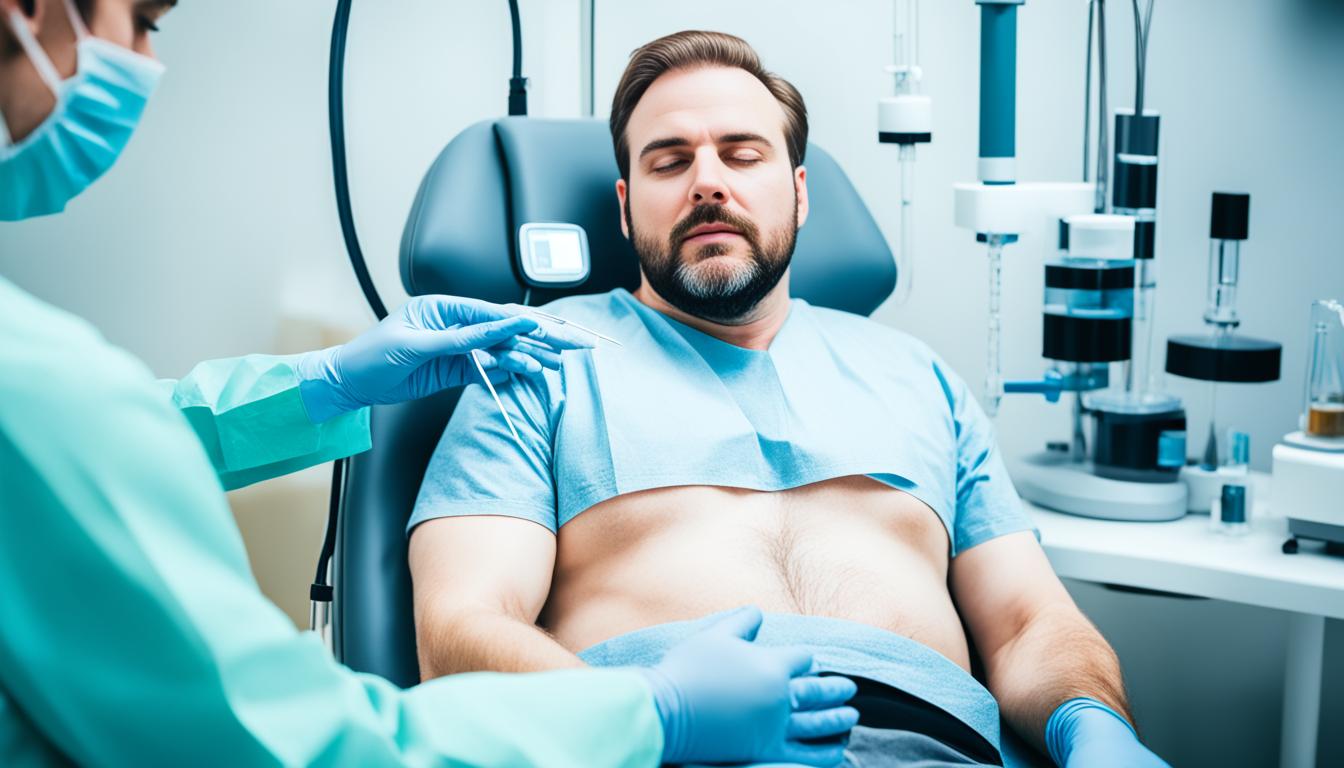Eating disorders are serious illnesses linked to severe eating habits and thoughts. They include anorexia nervosa, bulimia nervosa, binge-eating disorder, and avoidant restrictive food intake disorder.
Anorexia nervosa shows in extreme food restriction, fear of weight gain, and a wrong body image. Bulimia nervosa consists of eating a lot then purging. Binge-eating disorder happens when people eat much but don’t purge. And avoidant restrictive food intake disorder is about limiting food without fear of getting fat.
These disorders show in many symptoms, like being very thin, seeing your body wrong, feeling anxious or sad, and having health issues. It’s crucial to spot these signs early and get the right help. This can aid in getting better and avoiding big health problems.
Key Takeaways:
- Common eating disorders include anorexia nervosa, bulimia nervosa, binge-eating disorder, and avoidant restrictive food intake disorder.
- Symptoms of eating disorders are extreme thinness, warped body image, anxiety, and depression.
- Spotting the signs early is key to stopping worse health problems.
- Getting the right help, like therapy and medical care, helps in recovering from eating disorders.
- Stem cell therapy is a new option for eating disorders, but we need more studies on its pros and cons.
Understanding the Causes and Risk Factors of Eating Disorders
The causes of eating disorders are complex, with many factors at play. Discovering disordered eating habits is key to spotting the signs early.
Genetics and brain chemistry differences can lead to eating disorders. People with a family history are more likely to develop one. These factors can mess with how we feel hungry, our moods, and our weight, leading to unhealthy eating.
Our surroundings matter, too. Society often pressures us to be thin. This leads to unhealthy diets and dissatisfaction with our bodies. Media and ads push us to look a certain way, making things worse.
Bad experiences, like trauma or bullying, can also push us toward eating disorders. They can make us feel bad about ourselves. This might cause us to control our food intake unnaturally.
If you have traits like wanting to be perfect or not thinking well of yourself, you might be at risk. These personal traits make you more likely to feel the pressure to look perfect. This can harm how you see your body and eating habits.
Supporting those fighting eating disorders is crucial. We should push for a positive body image and self-love. Talking about mental health openly and valuing our well-being helps prevent and fight eating disorders.
Eating Disorder Risk Factors
Here is a list of common risks tied to eating disorders.
| Risk Factors | Description |
|---|---|
| Genetics | Inherited traits and family history of eating disorders |
| Abnormal Brain Chemistry | Imbalances in neurotransmitters related to mood and appetite regulation |
| Environmental Factors | Societal pressures for thinness, diet culture, exposure to media promoting unrealistic body standards |
| Traumatic Experiences | Childhood trauma, abuse, or bullying |
| Personality Traits | Perfectionism, low self-esteem, high self-criticism |
Treatment Options for Eating Disorders and the Importance of Early Intervention
Starting treatment early is key when dealing with eating disorders. Cognitive behavioral therapy (CBT) can help change how people think and act towards food and body image. For teens, family-based therapy (FBT) gets families involved, which is crucial. This therapy uses nutrition and meal plans to encourage healthy eating and weight.
Sometimes, people need to be hospitalized if they’re very sick. Stem cell therapy is a new approach showing promise. It might help repair damage and boost the health of those with eating disorders. But, we still need more research to be sure of its benefits and risks.
A mix of therapy, nutrition, and sometimes medical care is the best path to recovery. This approach is tailored to each person, aiming for a full return to health. It also helps avoid serious health issues in the future.

